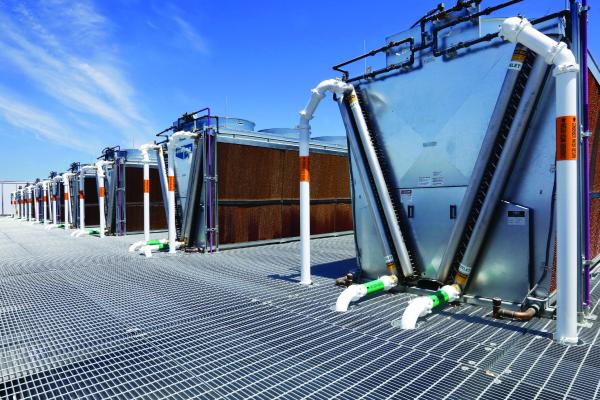Technology
This article will explore the Cooling Technologies Institute (CTI) Standard 201 (STD-201) Thermal Certification This article will explore the Cooling Technology Institute (CTI) Standard 201 (STD-201) Thermal Certification Program, share perspective from leading cooling tower manufacturers, and cover other existing and evolving CTI test codes, standards and certifications. This article will also emphasize the investment and bandwidth contributed to CTI by cooling tower manufacturers for the benefit of the industry and its end users.
In recent years, the HVAC industry has enlarged its vision from focusing on equipment efficiency measured in terms of ratings points at specific conditions to include a whole building perspective that uses models of year-long, real-world conditions. Accordingly, energy standards have adopted new rating methods to evaluate equipment efficiency during part-load operation. In Part 1 of this two-part article series we examined how these standards are evolving.
[ Read Full Story ]
This article examines challenges with phosphorous-based programs, key factors to controlling cooling water chemistry and the advantages of phosphorous- and zinc-free cooling water treatment technology.
[ Read Full Story ]
Chillers are an essential component in many building Heating, Ventilation and Air Conditioning (HVAC) systems. They provide cooling to the building by working in tandem with pumps and cooling towers in a water-cooled chiller plant. Because of the chiller’s complexity and its role in cooling facilities, it is arguably the most important piece of equipment to maintain.
[ Read Full Story ]
The 2019 AEE World Energy Conference and Expo was held September 25-27 at the Walter E. Washington Convention Center in Washington D.C. The event featured 14+ tracks, 56 sessions, over 260 individual speakers, and 62 exhibitors. Both Chiller & Cooling Best Practices and Compressed Air Best Practices® Magazines were pleased to be in the literature bins at the 2019 AEE World!
[ Read Full Story ]
The chilled water is generated in the central plant and then transported through a piping network to cooling coils (air handlers), or to point of end-use in processes. Facility directors and energy managers are always chasing multiple goals - satisfying all the customers, maintaining a high-level of reliability and minimizing energy spends with varying demand and weather. Therefore, many modern plants employ a good chiller optimization package such as Hudson Technologies’ SMARTenergy OPS® in conjunction with Building Automation Systems (BAS) to optimize the chiller plants.
[ Read Full Story ]
When a cooling tower supporting the HVAC system at NYC Health + Hospitals/Lincoln was nearing its expected end of life, the management of the 362-bed hospital in the South Bronx saw an opportunity. The year before, the neighboring community had experienced outbreaks of Legionnaires’ disease, and even though the hospital’s cooling towers played no role in those outbreaks, the chance to increase protections against possible future exposures of the bacteria that cause the disease was an important consideration.
[ Read Full Story ]
This first article will examine the evolution of equipment-efficiency standards from full to part load and their relationship to whole-building efficiency. The second article will look at how HVAC technologies are advancing to modulate capacity to match variations in building loads, a major factor in improving whole-building energy performance.
[ Read Full Story ]
While most rely on chemicals for water treatment, others are finding success in what can be accurately and fairly described as a green solution because it takes the form of a moss. More precisely, this plant-based alternative to chemical water treatment leverages the properties of sphagnum moss, and it’s being harvested, processed and sold as ProMoss™ to companies throughout North America by Creative Water Solutions (CWS), Plymouth, Minnesota.
[ Read Full Story ]
Absorption chillers have been around for more than 75 years, with several thousand chillers operating successfully all over the world today. Yet myths about cost, operation and performance surround this technology, particularly in North America. Look beyond the myths and you’ll discover absorption cooling technology can be efficient, cost-effective, flexible and reliable.
[ Read Full Story ]
Have you ever woken in the middle of the night in a cold sweat wondering if your plant is using more energy than it should, putting you at a disadvantage as compared to your competition? Even if your energy monitoring or energy management system is in place you may not have the required insight to improve your performance and keep you competitive.
[ Read Full Story ]

